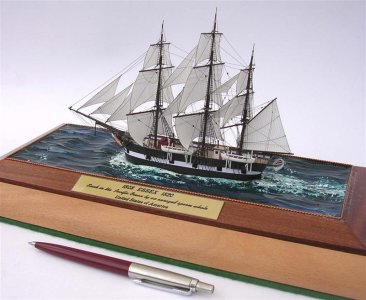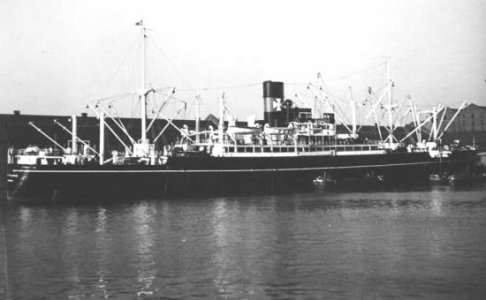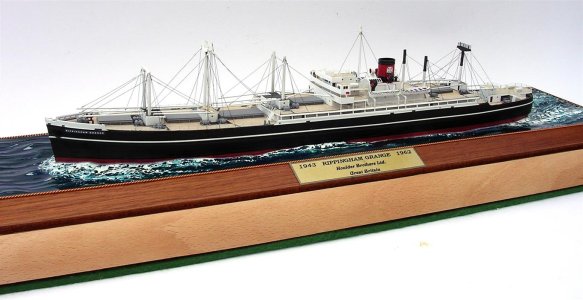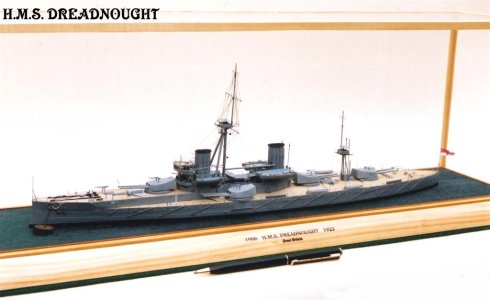-

Win a Free Custom Engraved Brass Coin!!!
As a way to introduce our brass coins to the community, we will raffle off a free coin during the month of August. Follow link ABOVE for instructions for entering.
You are using an out of date browser. It may not display this or other websites correctly.
You should upgrade or use an alternative browser.
You should upgrade or use an alternative browser.
Some of my model ships
- Thread starter shipbuilder
- Start date
- Watchers 53
- Joined
- Jun 5, 2021
- Messages
- 165
- Points
- 88

Fantastique.
Merci pour cette présentation
Marco
Fantastic
Thank you for this presentation
Marco
Merci pour cette présentation
Marco
Fantastic
Thank you for this presentation
Marco
- Joined
- Dec 12, 2020
- Messages
- 147
- Points
- 88

Hello boat builder
Your work seems simple and wonderful to me.
It is the work of a great artist, at a very difficult level.
Those that remain will be greatly appreciated by your descendants or relatives.
I send you my great congratulations for your admirable work.
May you be happy for the rest of your life.
A hug
I love Parker pen roller ball
Your work seems simple and wonderful to me.
It is the work of a great artist, at a very difficult level.
Those that remain will be greatly appreciated by your descendants or relatives.
I send you my great congratulations for your admirable work.
May you be happy for the rest of your life.
A hug
I love Parker pen roller ball
Sugerencias
........... leaves me breathless!!
I am a clumsy old fool, blind in one eye and doing my best to build models, but it is difficult to establish a square when it looks like a parallelogram to me. Building clean, sharply detailed miniatures, and including all the rigging, as you do, is far out of my reach.
Bravo !!
I am a clumsy old fool, blind in one eye and doing my best to build models, but it is difficult to establish a square when it looks like a parallelogram to me. Building clean, sharply detailed miniatures, and including all the rigging, as you do, is far out of my reach.
Bravo !!
- Joined
- Nov 17, 2021
- Messages
- 26
- Points
- 58

I feel like Saleiri must have felt overwhelmed by Mozart
when I see your magnificent efforts. So well done!
when I see your magnificent efforts. So well done!
Indeed, amazing work! I can hardly wrap my head around how you can build such detailed models on such a small scale. Thank you for sharing this with us and passing on the inspiration.
- Joined
- Jun 29, 2020
- Messages
- 59
- Points
- 68

Well. What can I say. Masterful to begin with; just masterful. I am enamoured with your depiction of vessels underway; so realistic with hull speed depiction. Brilliant! And your rigging detail in such fine, small scale; brilliant! I am gobsmacked. Bloody nice work and a beauty to the eye, just the way ships are. Magnificent!
This is an amazing body of work. Of course, the ships themselves are incredible, but I am particularly interested in your water effects. Are your glassy seas carved wood with gel-medium top-treatment, and the rolling seas some version of the tissue paper and white-glue method?
- Joined
- Jun 30, 2012
- Messages
- 1,418
- Points
- 433

Thanks for replies, and I know that you are all genuine, but some people
on another forum will claim that all the above comments are written myself, about myself, although I know, and you know, that we are all different people. The following is part of my charcter asassination"
"On one occasion, his two new identities had a conversation between themselves about Bob's wonderful skills and merchant ships. He had a three way conversation about himself in a topic"
I would swear in a court of law that I never had three conversations with myself under three different registeries. Neither do I claim to be anywhere near the best. The top miniaturists get thousands of pounds for each model, where I was lucky to get three or four hundred, and seldom got even the minimum wage.
For a while, it drove me away from various model ship forums, but since having got too old to build any more, their lies can no longer harm me! Apart from anything else, their comments cut me to he core, and it took me a long time to get over it. But all in the past now, and mostly forgotten, but I always fear they will be coming at me again. I am glad you are all enjoying the models from my archives.
Bob

on another forum will claim that all the above comments are written myself, about myself, although I know, and you know, that we are all different people. The following is part of my charcter asassination"
"On one occasion, his two new identities had a conversation between themselves about Bob's wonderful skills and merchant ships. He had a three way conversation about himself in a topic"
I would swear in a court of law that I never had three conversations with myself under three different registeries. Neither do I claim to be anywhere near the best. The top miniaturists get thousands of pounds for each model, where I was lucky to get three or four hundred, and seldom got even the minimum wage.
For a while, it drove me away from various model ship forums, but since having got too old to build any more, their lies can no longer harm me! Apart from anything else, their comments cut me to he core, and it took me a long time to get over it. But all in the past now, and mostly forgotten, but I always fear they will be coming at me again. I am glad you are all enjoying the models from my archives.
Bob

- Joined
- Jun 30, 2012
- Messages
- 1,418
- Points
- 433

The early seas were plastcine (modelling clay) painted by my wife with Humbrol enamels. Later ones were made from polystyrene foam, shaped with the flame from a gas blowtorch with the air intake turned off so that the flame was more like a candle flame. That was painted with white glue, and crepe paper pressed into it, then painted again with white glue, and after dry, Humbrol enamel. The stretching qualities of crepe paper helped with pressing it into the waves. One of my few warships :This is an amazing body of work. Of course, the ships themselves are incredible, but I am particularly interested in your water effects. Are your glassy seas carved wood with gel-medium top-treatment, and the rolling seas some version of the tissue paper and white-glue method?

- Joined
- Jun 29, 2024
- Messages
- 1,423
- Points
- 393

Bob,
The high quality of your models speak for themselves!!
A well known American ship model builder by the name of Rob Napier now specializes in the restoration of old models held in collections. He has written several books and I find them to be more interesting than the how to do books. In one very complex restoration he writes about the several “hands” that worked on the model during its past life; each one identified by Its unique workmanship.
Scratch built models built by hand do have that unique quality that make them works of art. While computer driven CNC or 3D printed models may offer precision impossible to achieve by hand, I believe that future collectors will not consider them to be art as they will not have that unique identifiable “hand.”
I personally would love to add one of your models to my collection, but living in very northern Midwestern USA, even if I could find one, It would be damaged by the shippers.
Don’t be discouraged! Your models are a fine legacy.
Roger
The high quality of your models speak for themselves!!
A well known American ship model builder by the name of Rob Napier now specializes in the restoration of old models held in collections. He has written several books and I find them to be more interesting than the how to do books. In one very complex restoration he writes about the several “hands” that worked on the model during its past life; each one identified by Its unique workmanship.
Scratch built models built by hand do have that unique quality that make them works of art. While computer driven CNC or 3D printed models may offer precision impossible to achieve by hand, I believe that future collectors will not consider them to be art as they will not have that unique identifiable “hand.”
I personally would love to add one of your models to my collection, but living in very northern Midwestern USA, even if I could find one, It would be damaged by the shippers.
Don’t be discouraged! Your models are a fine legacy.
Roger
- Joined
- Jun 30, 2012
- Messages
- 1,418
- Points
- 433

Thank you Roger,
I am not at all discouraged, because it is all ended now, and my shipmodelling career is over, and I am more than happy with the overall success of it all. It is all in the past. I cannot say that I miss it, because there was a lot of worry involved as well as work. Would models arrive safely? as they went all over the world. They do regularly turn up in US auctions, although at a lot more than I got for them. This one, cruising yacht Stella Polaris went a few weeks ago for more than twice the sum that I got for it - Nowadays, I am more than happy with my drawing. -


I am not at all discouraged, because it is all ended now, and my shipmodelling career is over, and I am more than happy with the overall success of it all. It is all in the past. I cannot say that I miss it, because there was a lot of worry involved as well as work. Would models arrive safely? as they went all over the world. They do regularly turn up in US auctions, although at a lot more than I got for them. This one, cruising yacht Stella Polaris went a few weeks ago for more than twice the sum that I got for it - Nowadays, I am more than happy with my drawing. -


- Joined
- Jun 17, 2021
- Messages
- 3,174
- Points
- 588

I could hardly say it better. As fine as any I have seen in museum collections. I worked for a time as a volunteer model shipwright restoring collection models at the US Naval Academy Musem, so I am not making an idle assessment.My goodness! They are brilliant. I really admire small scale work when it’s done well.
Pete Gutterman
- Joined
- Jun 17, 2021
- Messages
- 3,174
- Points
- 588

Your models, without question, belong in the Pantheon of miniaturists that includes Phillip Reed, Gus Augustin, Donald McNarry, Lloyd McCaffrey, et al.
Thanks for sharing them with us! What a privilege.
Pete
Thanks for sharing them with us! What a privilege.
Pete
Last edited:
- Joined
- Mar 22, 2024
- Messages
- 396
- Points
- 168

This made me smile. My maternal grandfather, a ship's baker and a somewhat rascally functioning alcoholic started his career on a cable ship, the SS. Nebraska and then worked for Union Castle, Grange Line, and Bay Lines finishing up working for NZSL on the Rangitiki and Rangitani. The relevance of this is, for at least the last 20 years he worked under an alias with someone else's passbook because he had been black-balled for brewing hooch in the galley of the Upwey Grange (pictured). The passbook was for somebody called 'MacArthur' . His first name was also Arthur, and when somebody enquired he would say 'MacArthur, but you can call me Mac. He spent his retirement (when not in a pub) as a gangway watchman in London Docks.On one occasion, his two new identities had a conversation between themselves about Bob's wonderful skills and merchant ships. He had a three way conversation about himself in a topic

- Joined
- Jun 30, 2012
- Messages
- 1,418
- Points
- 433

Thanks - I have heard of Reed, McNarry and McCaffrey, but notAugustin, but I am way below their class for the simple reason that their models went for literrally thousand, of £s / $ - quite often at auctions in London, mine did not sell until the 2nd or 3rd time of entering. This one went for a very low price, one of my biggest flops, although I was expecting quite a lot for it -Your models, without question, belong in the Pantheon of miniaturists that includes Phillip Reed, Gus Augustin, Donald McNary, Lloyd McCaffrey, et al.
Thanks for sharing them with us! What a privilege.
Pete

Last edited:
- Joined
- Jun 30, 2012
- Messages
- 1,418
- Points
- 433

I also worked for Houlder Brothers, who had the Granges, in the iron ore carrier Joya McCance,. and for a number of years in the Union-Castle Mail Steamship Co as well.This made me smile. My maternal grandfather, a ship's baker and a somewhat rascally functioning alcoholic started his career on a cable ship, the SS. Nebraska and then worked for Union Castle, Grange Line, and Bay Lines finishing up working for NZSL on the Rangitiki and Rangitani. The relevance of this is, for at least the last 20 years he worked under an alias with someone else's passbook because he had been black-balled for brewing hooch in the galley of the Upwey Grange (pictured). The passbook was for somebody called 'MacArthur' . His first name was also Arthur, and when somebody enquired he would say 'MacArthur, but you can call me Mac. He spent his retirement (when not in a pub) as a gangway watchman in London Docks.
View attachment 495932

- Joined
- Jun 30, 2012
- Messages
- 1,418
- Points
- 433

Just looked up Gus Augustin, excellent models, but I had not come across them before as I have never had much interest in warships. I did once build HMS Dreadnought though.Your models, without question, belong in the Pantheon of miniaturists that includes Phillip Reed, Gus Augustin, Donald McNary, Lloyd McCaffrey, et al.
Thanks for sharing them with us! What a privilege.
Pete

Amazing craftsmanship!

